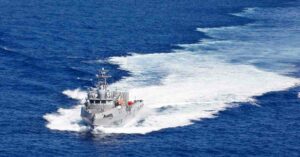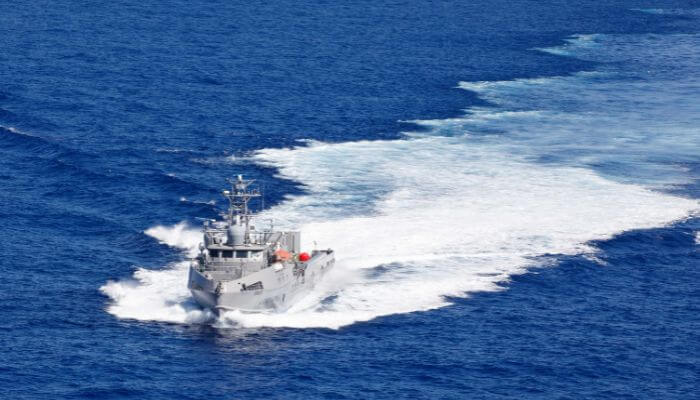
US Navy Destroyer To Be Named After WWII Hero Charles Jackson French
January 18, 2024
U.S. Navy Fires Captain of Submarine USS Georgia Citing “Loss of Confidence”
January 18, 2024
Following five months in the Pacific, the U.S. Navy concluded the first deployment of four unmanned vessels to test ideas for incorporating their capabilities into the crewed fleet activities. The Sea Hawk, Sea Hunter, Mariner, and Ranger unmanned surface vessels sailed from Southern California on August 7 and returned on January 15.
The first two vessels originate from an effort led via the Defense Advanced Research Projects Agency, while the Strategic Capabilities Office’s Overlord mission is the origin of the other two. The four prototypes visited ports in Australia and Japan and travelled 46,651 nautical miles during that five-month timeframe. In a Tuesday call with reporters, Cmdr. Jeremiah Daley, the head of the Unmanned Surface Vessel Division One, also disclosed that each has operated at sea for 50 days at a time, almost exclusively and in autonomous mode.

Per Daley, the deployment, supervised by the U.S. Pacific Fleet, aimed to evaluate the current operational concepts, crewing assumptions, predicted maintenance requirements, and more by placing the unmanned vessels in a forward-deployed setting with real sailors and Marines on operational ships. As stated by Daley, the deployment went well, and the concepts for sustainment and operations are almost ready for prime time. The control and command of the vessels was a plus.
The only human accommodations on Sea Hunter, along with Sea Hawk, are in a small bridge only utilized for controlling the vessels as they enter and exit a port. While Ranger and Mariner may be manned, Daley stated they were mainly deployed in autonomous mode. After that, personnel onboard another U.S. Navy vessel or at the Unmanned Operations Center in Port Hueneme of California manage the vessels.
In the words of Daley, he and his division personnel experimented with several methods for controlling the vessels both on land and at sea, including applying different personnel numbers, managing various numbers of vessels via a single console, and shifting control in multiple ways and so on — leading this to be one of the most mature features of the notion of operations.
However, connecting the USV and its payload to the more extensive network of sensors and shooters is an area that still needs improvement. Daley stated that the USVs operated in the air, on land, and underwater, but he would not specify the vehicles’ payloads. However, their operations made it clear that there was a need to enhance integration. One area where there may be an opportunity to close those seams, if any, per him, is in combining with the Joint Fires Network of U.S. Indo-Pacific Command to ensure that the information the USVs obtain can be best utilized by the rest of the Navy and the joint force. Part of that will be brought about by the Navy’s planned deployment of the Integrated Combat System.
According to Daley, Mariner employs a virtualized version of the Aegis Combat System. However, the service members need greater integration based on how they can conceive using an unmanned ship to aid their operations. The same software will be installed on Navy crewed vessels and the Large USV upon completing the Integrated Combat System, facilitating easier data sharing.
While more work needs to be done before unmanned ships are a regular part of fleet operations, Daley said that the fleet’s excitement was evident during the deployment, especially from amphibious as well as stand-in forces hoping to expand throughout the Pacific and leverage as well as contribute to a shared image of the battlespace.
Reference: defense news
US Navy Completes First Testing Phase Of 4 Unmanned Vessels appeared first on Marine Insight – The Maritime Industry Guide
Source: Maritime Shipping News


